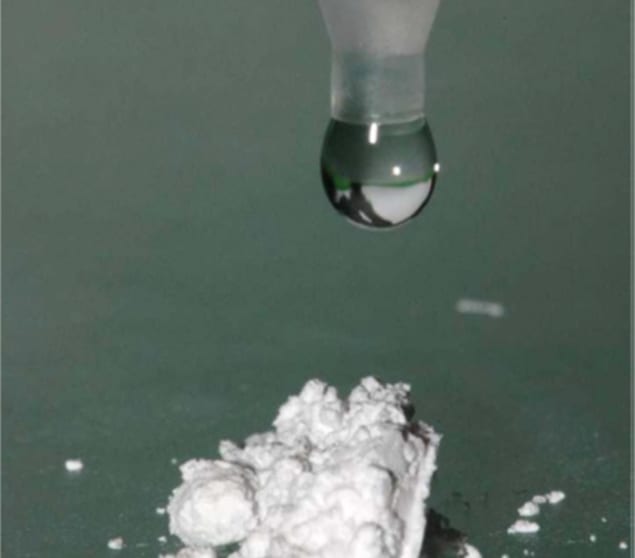
Dental fillings could soon last longer thanks to a new study of how the movement and bonding of aluminium ions affects the toughness of a popular type of dental cement. The research was done by an international team of scientists that used neutron scattering and terahertz spectroscopy to observe the ions during the hardening process. The results could lead to the development of more effective dental materials.
Glass ionomer cements (GICs) have been used by dentists for 40 years to repair damaged teeth. While these materials do an adequate job, they the lack the toughness (resistance to fracturing) that characterizes both the dentine found in natural teeth and the mercury–silver amalgam fillings that have long been the mainstay of dentistry. A GIC filling will last about 10 years, whereas an amalgam filling can endure for a lifetime. The problem with mercury–silver amalgam, however, is that there are growing concerns about its potential toxicity to patients, dentists and the environment in general.
This latest research was done by Greg Chass of Queen Mary University London, Neville Greaves of the University of Aberystwyth and colleagues in the UK, Hungary, Denmark and China. The team studied GICs made from a commercial grade of glass powder that has been used by dentists since the 1970s. The powder is mixed with poly(acrylic) acid (PAA) and while hardening occurs quickly, the toughness of the cement will continue to change on a timescale of tens of hours.
Racing-car drivers
Researchers already know that hardening involves aluminium ions that leach out of the glass particles and then bind to both the glass and to molecules in the PAA. The toughness of the hardened cement is thought to be related to how many bonds each aluminium ion makes with its neighbouring atoms – a number that can range from four to six. Chass likens the effect to that of a seatbelt: “a racing-car driver constrained by a six-point harness can’t move at all”, he says. However, an ordinary driver in a three-point seatbelt has much more freedom to move. The idea is that a greater number of aluminium bonds will lead to a material that is more rigid and therefore more likely to crack under stress.
To test this idea, the team first had to understand when the aluminium bonds form during the hardening process. This was done using terahertz spectroscopy, which is sensitive to the dynamical processes that occur as bonds form in the material. This study found that the bonding process began about one hour after the glass and PAA were mixed, and the process continued for at least 10 hours. The team then used neutron-diffraction techniques to work out how the aluminium ions are bonded as a function of time. This study revealed that during the first 14 hours of hardening, most aluminium ions are bonded to four atoms. However, after about 14 hours, atoms with six bonds dominate the material.
Greaves told physicsworld.com that the research suggests that the key to making tougher cement could lie in stopping the hardening process before too many six-atom bonds are formed. He says that the research shows that the switching process from four to six bonds involves “many-atom collective vibrations that ‘choreograph’ configurational changes in the cement”.
New toughness technique
The team has also developed a new technique to measure the toughness of the cement without having to destroy it. This involves firing neutrons at the cement and measuring how much momentum is transferred from the neutrons to aluminium atoms in the sample. The width of the momentum-transfer peak is a measure of how strongly bonded the aluminium atoms are within the cement. By measuring the toughness and peak widths of a number of different cement samples, the team showed that peak width can be used to determine the toughness of the cement.
This neutron technique was used to measure the toughness of the cement as it hardened and showed that the material becomes less tough as time progresses.
Greaves also points out that the glass powder used to make GIC cement is a very complicated material that includes several distinct types of glass particle. Each type of glass probably plays a different role in determining other important properties of the cement, such as its colour or adhesion to dentin. As a result, making better cement would probably involve more than just focusing on aluminium bonding.
The team is now looking at how the techniques could be adapted to study other materials including Portland cement.
The study is described in Nature Communications.



